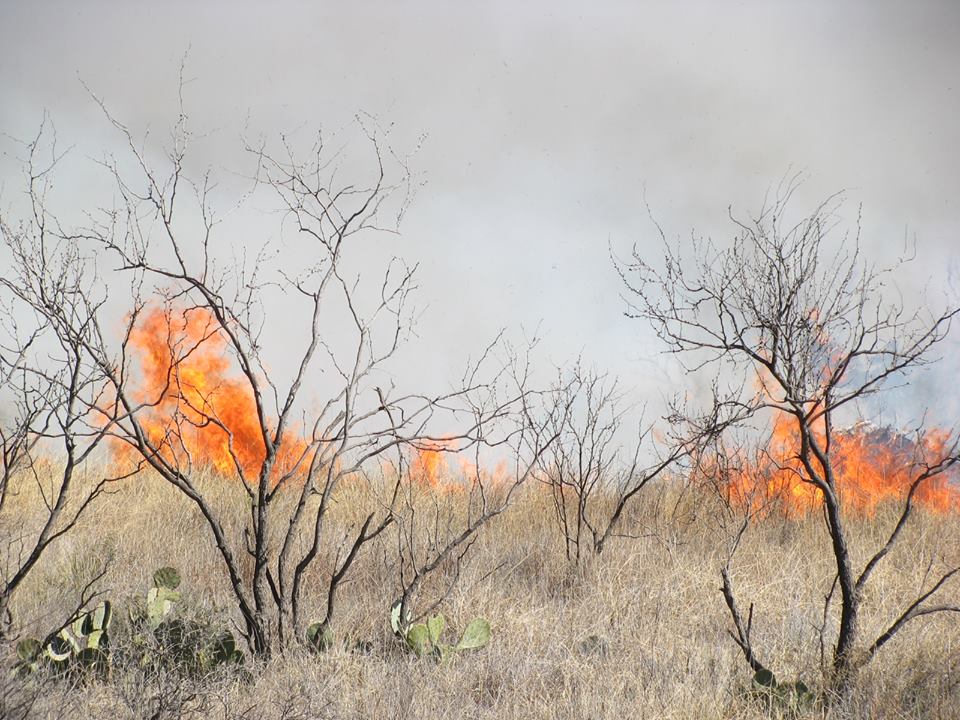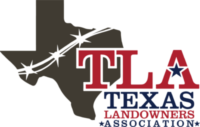
Why Burn Your Land?
The Importance of Prescribed Burning
By: Morgan L. Russell, Ph.D.
Department of Ecosystem
Science and Management
Assistant Professor and Extension Range Specialist
Texas A&M AgriLife Extension Service
History and Importance of Fire
Fire and grazing are natural and important processes in maintaining Texas grassland and savannah plant communities. Active fire suppression has in fact been recognized as a key disruptive force in rangeland ecosystem integrity throughout North American rangelands and the world. Before European settlement and their introduction of domestic livestock grazing practices, native plant communities were maintained by periodic fires and the grazing patterns of native wildlife. After the beginning of the twentieth century a stronger demand for fire suppression emerged throughout the United States placing fire suppression as a national priority.
For even more information about Fires’ unusual history in Texas, check out our article: History of Fire in Texas!
Early European ranchers had very little experience in semi-arid grasslands, and consequently, did not anticipate the adverse effects of overgrazing and fire suppression on rangeland structure and function. These management changes slowly transitioned native plant communities from savanna-grasslands to dense woodland communities. Since then, Texas rangeland managers have spent more than 60 years seeking methods to reduce woody plant species in an effort to reverse the downward trend in herbaceous plant productivity and species diversity. After almost a century of official and successful anti-fire campaigns, the benefits of conducting prescribed burns are slowly gaining both scientific and cultural attention as a sound range management tool.
Fire’s Effect on the Ecosystem
Fire’s ecological effects are numerous and complex. Fire can manipulate nutrient dynamics, soils, vegetation, grazing patterns, and grazing behavior of animals. Primary factors affecting plant community response are timing, frequency, and intensity of fire relative to the biology and origin of the flora and fauna examined.
Generally speaking, with average precipitation, native perennial grass productivity typically increases with average growing conditions following a low-intensity fire. Neutral responses in total productivity occur when increases in native perennial grasses are offset by reductions in annual grasses and weedy forbs, which are predominantly non-native and non-preferred species. Fire causes an immediate reduction of standing dead material and litter, which presents a loss in forage in the short-term. However, with average annual precipitation, the reduction in litter can alter light and moisture relations at the soil surface, promoting increased herbaceous productivity and discouraging the establishment of non-native species. Reduction of standing dead material and litter, as well as improved forage quality of new plant growth, attracts grazing animals to recently burned sites.
Wondering if you should burn your property? Check out our article Prescribed Burning: Learn the benefits. It’s full of resources and outlines how you can benefit from a burn on your land.
Response to fire can be species-specific, allowing targeted control of undesirable and woody species, such as pricklypear cactus and eastern red cedar. Prescribed fire has been shown to be the most efficient and economical method for controlling this invasive, non-sprouting native juniper. Intense and frequent fire can result in a direct reduction in canopy cover of woody plants by killing, injuring, or reducing trees to smaller size classes. Following fire, browsing animals may further inhibit recovery of woody plant species due to increased accessibility and palatability. As an evolutionary process, fire cannot be substituted with any other management option.
Fire Prescriptions
Perhaps the most important elements of a prescribed burn are the guidelines and objectives, otherwise known as the fire prescriptions. A fire prescription for a prescribed burn is a set of conditions under which a fire will be set to meet specific land management goals and objects. Fire prescriptions are based on scientific research and experience. However, specific recommendations must be customized for each particular burn unit and plan.
These prescriptions are based on type of burn, fuel load, fuel type, personnel experience, equipment, and management goals and objectives. One set of prescriptions will not work for all prescribed burns. That said general burn prescriptions will typically consist of temperatures between 40 – 70 °F, 30 – 60 % relative humidity, and 5 – 15 mph winds. A prescribed burn should always be implemented with a set of guidelines, including go or no-go weather conditions.
Realistic and dependable burn prescriptions enable improved decisions to be made regarding the type of conditions to burn under in order to achieve specific objectives successfully and safely. These objectives could range from burning to control woody species seedlings in light fuels to conducting a prescribed burn that does not scorch or top-kill certain desired trees or primary habitat areas.
Controlling Woody Species
Prescribed burning does have limitations for woody species control, especially if you wait too long to reintroduce fire. Many plant species will gradually grow too large to be affected by typical prescribed burn prescriptions, such as eastern red cedar. As eastern red cedar trees grow taller (> 5 feet), they become more challenging to control, requiring a greater fine fuel load or a more extreme burn prescription. Using extreme burn prescriptions equates to burning under higher temperatures and lower relative humidity, and a greater risk for an escaped fire. Therefore, the most important part of any prescribed fire and grazing program is to maintain adequate fuel loads to achieve specific management objectives through proper stocking rates. A minimum of 1,500 lbs/acre of fuel with consistent fuel continuity is generally required to remove decadent plant build-up, 2,000 lbs/acre of fuel is recommended for range improvement type burns, and 3,500 lbs/acre of fuel is required to target woody and brush species with a prescribed burns.
Protecting with Fire
Lastly, prescribed fire can be used to protect areas within wildland/urban interface corridors. Prescribed burns decrease volatile fuel loads, alter the structure of the surrounding fuels, and creates safety or buffer zones around homes, buildings, and towns. Areas that consist of dense fuel loads can be periodically burned to reduce fuels to a more manageable suppression standpoint reducing the chance for high-intensity crown and spot fires. Decreasing dense fuel loads and ladder fuels creates an improved environment for wildfire suppression and overall firefighter safety, while restoring rangeland structure and function.
Conclusion
An important point to remember is that although prescribed burning will not solve all rangeland management problems, it may solve some of them. Also, keep in mind that prescribed burning is not a one-time, cure-all, silver-bullet treatment, but a routine program that must be maintained. Fire frequency is the key to success. Native rangeland vegetation is adapted to periodic burning. However, some fires can be very destructive if proper management is not followed before and after the prescribed burn. Livestock and wildlife are easily attracted to recently burned areas and can overgraze the burned area if given the opportunity. Rangeland recovery following a prescribed burn is a key element that goes hand-in-hand with a properly planned, timed, and executed prescribed burn.
One of the best reasons to utilize a prescribed burn is usually the lower cost of burning compared to other rangeland management options, such as mechanical or chemical treatments. When rangelands have endured previous years of poor management, prescribed fire alone is not the most effective management option. In these scenarios, land managers many have to integrate mechanical or chemical treatments along with prescribed burning to reclaim certain areas and to restore plant community structure and function. Combining multiple management options enables prescribed burns to be more effective and efficient in both the short- and long-term. Ultimately, rangeland managers must decide on the best management tool for a particular situation in relationship to overall management goals and objectives. An extensive and impressive amount of scientific literature exists that compares rangeland management options, strategies, and ecological impacts. To find out which treatments (or combination of treatments) would be the most economically and ecologically effective for your rangeland consult the Texas A&M AgriLife Extension Service or any Natural Resource Conservation Service (NRCS) office for more information.
References
Taylor, C.A. 2005. Prescribed burning cooperatives: empowering and equipping ranchers to manage rangelands. Rangelands 27: 18-23.
Weir, J.R. 2009. Conducting prescribed fires: a comprehensive manual. College Station, TX, USA: Texas A&M University Press. 194 p.
Wright, H.A., and A. W. Bailey. 1982. Fire ecology, United States and southern Canada. New York: John Wiley and Sons. 501 p.
